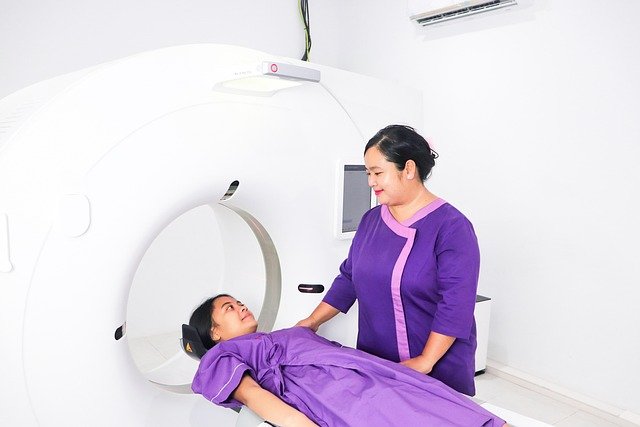What is a medical assistant and what do they do?
Medical assistants are versatile healthcare professionals who perform both clinical and administrative tasks in medical offices, clinics, and hospitals. Their responsibilities may include taking patient vital signs, preparing exam rooms, scheduling appointments, updating medical records, and assisting physicians during procedures. This dynamic role requires a combination of medical knowledge, interpersonal skills, and organizational abilities.

Understanding the Medical Assistant Career Path
A medical assistant career offers a unique blend of patient interaction, administrative responsibilities, and clinical support tasks. These professionals work directly with physicians, nurses, and other healthcare providers to deliver quality patient care. Medical assistants typically handle appointment scheduling, patient check-ins, vital sign monitoring, medication administration assistance, and medical record management. The role requires strong communication skills, attention to detail, and the ability to multitask in fast-paced healthcare environments. Career advancement opportunities include specializing in areas such as cardiology, dermatology, or pediatrics, with many medical assistants eventually pursuing further education to become registered nurses or other healthcare professionals.
Medical Assistant Training Programs Overview
Medical assistant training programs are designed to prepare students for entry-level positions in healthcare facilities within a relatively short timeframe. These programs typically range from 6 months to 2 years, depending on whether students pursue a certificate, diploma, or associate degree. Training curricula cover essential topics including medical terminology, anatomy and physiology, pharmacology basics, clinical procedures, medical office administration, and electronic health records management. Students learn to perform tasks such as taking patient histories, measuring vital signs, preparing patients for examinations, assisting with minor surgical procedures, and handling laboratory specimens. Many programs also include hands-on clinical externships that provide real-world experience in healthcare settings.
Finding Medical Assistant Training Programs USA
Medical assistant training programs in the USA are widely available through community colleges, vocational schools, and specialized healthcare training institutes. When searching for quality programs, students should look for accreditation from recognized organizations such as the Commission on Accreditation of Allied Health Education Programs (CAAHEP) or the Accrediting Bureau of Health Education Schools (ABHES). These accredited programs ensure students receive comprehensive education that meets industry standards and prepares them for certification examinations. Many programs offer flexible scheduling options, including evening and weekend classes, to accommodate working students. Online components combined with hands-on laboratory sessions have become increasingly popular, allowing students to complete theoretical coursework remotely while gaining practical skills in person.
Locating Medical Assistant Training in Your Area
When searching for medical assistant training in your local area, consider factors such as program length, cost, class schedules, and job placement assistance. Many community colleges offer affordable training options with evening or weekend classes to accommodate various schedules. Research local healthcare facilities to understand which training programs they prefer when hiring, as some employers have partnerships with specific schools. Contact program admissions offices to discuss financial aid options, including federal grants, scholarships, and payment plans. Additionally, consider the program’s clinical externship partnerships, as these relationships often lead to job opportunities upon graduation.
Building Your Medical Assistant with Training Foundation
Developing a strong foundation as a medical assistant with training involves mastering both technical skills and soft skills essential for healthcare environments. Technical competencies include proficiency in electronic health record systems, medical billing and coding basics, laboratory procedures, and clinical equipment operation. Equally important are communication skills, empathy, cultural sensitivity, and the ability to work effectively in team settings. Many training programs emphasize professional development, teaching students about healthcare ethics, patient confidentiality requirements, and workplace professionalism. Continuing education is also crucial in this field, as medical technology and healthcare practices continually evolve.
Medical Assistant Training Program Comparison
| Institution Type | Program Length | Average Cost Range | Key Features |
|---|---|---|---|
| Community Colleges | 12-24 months | $3,000-$8,000 | Associate degree option, financial aid available, regional accreditation |
| Vocational Schools | 6-12 months | $5,000-$15,000 | Accelerated programs, flexible scheduling, job placement assistance |
| Online Programs | 6-18 months | $4,000-$12,000 | Self-paced learning, remote coursework, local clinical arrangements |
Prices, rates, or cost estimates mentioned in this article are based on the latest available information but may change over time. Independent research is advised before making financial decisions.
The medical assistant profession offers stable employment opportunities with competitive wages and the satisfaction of helping others. According to the Bureau of Labor Statistics, employment for medical assistants is projected to grow much faster than average, driven by an aging population and increased demand for healthcare services. Entry-level positions typically require completion of an accredited training program, though some employers provide on-the-job training. Professional certification, while not always required, can enhance job prospects and earning potential. Popular certifications include the Certified Medical Assistant (CMA) credential offered by the American Association of Medical Assistants and the Registered Medical Assistant (RMA) certification from American Medical Technologists.
This article is for informational purposes only and should not be considered medical advice. Please consult a qualified healthcare professional for personalized guidance and treatment.



